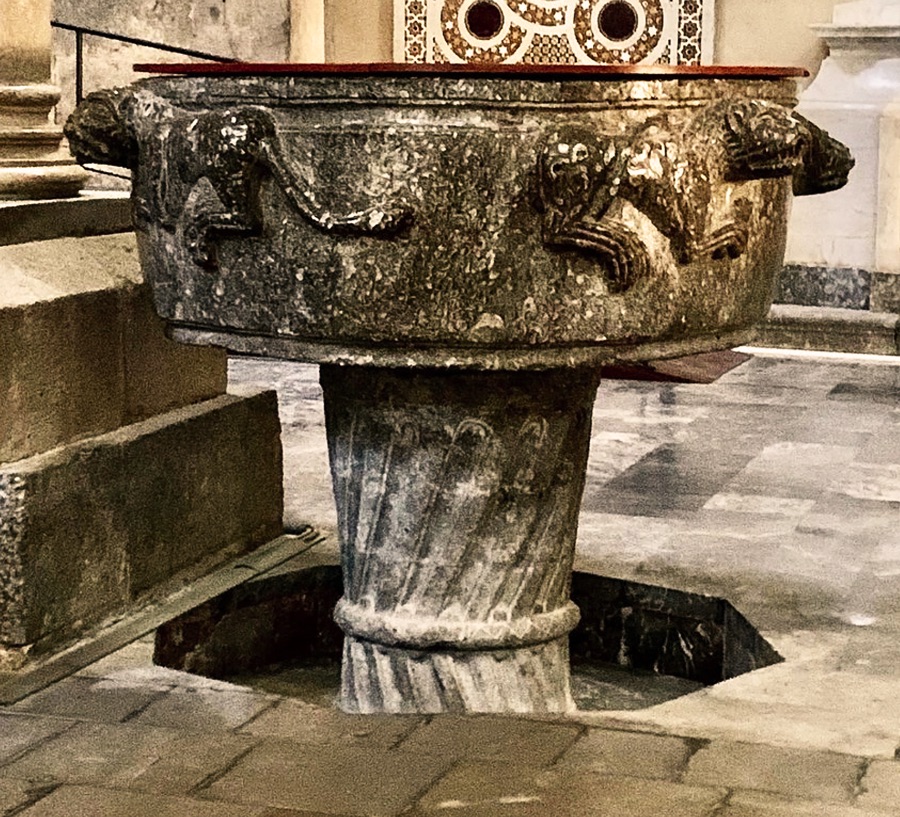The baptismal font, found in churches and baptisteries, is the basin containing the water for baptism, the moment in which one is reborn to new life, according to Christian religion. The Cefalù baptismal font, dating back to the 12th century, was positioned under the Norman ambo. The two monuments, together with the Paschal candle and the ambo, symbolised the Resurrection of Christ.
According to the dictates of the Counter-Reformation, Francesco Gonzaga, bishop of Cefalù from 1587, moved the font to the penultimate inter-column on the right, on a marble step. The baptismal font, which was recently returned to its original location, is carved from a single, majestic block of lumachella limestone, a stone from the nearby fortress. It has a circular basin, an example of Romanesque sculpture, on the edge of which are carved decorations of four lions, identified as the cubs of the lions placed in the base of the candelabra. Looking in detail at the representation, we can see from the movement of their tails that two lions are moving, because they have not yet received baptism, while the others are motionless. The basin is supported by a pedestal-support, made of the same stone, decorated with inclined grooves converging towards the collar.